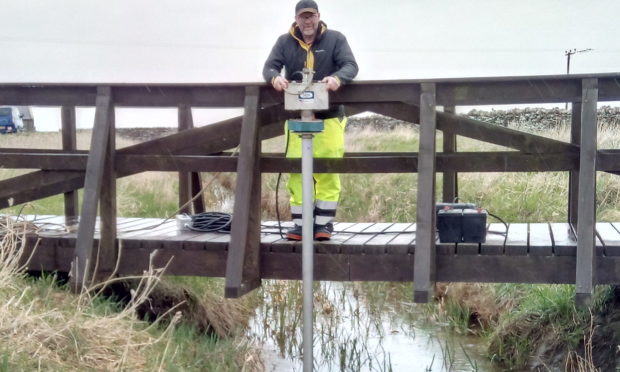An investigation has revealed a long lost Viking waterway running through mainland Orkney which once provided access to the stronghold of the islands’ ancient rulers.
It is believed the ancient ‘highway’ ran more than 10 miles, connecting a series of canals from the North Atlantic to Scapa Flow.
That waterway provided an essential trade route to allow the Vikings to haul boats and heavy goods, such as grain, and collect rents and taxes from wealthy estates.
The findings are the result of a collaboration between the universities of the Highlands and Islands, St Andrews and Wales and will be published in the Journal of Wetland Archaeology.
Orkney was a key area of power for Norse earls from the ninth to 12th centuries.
Old Norse place names connected to the sea and boats in the middle of Orkney’s mainland provided clues to the waterways that have disappeared due to later drainage projects and changes in climate and sea level.
They included ‘Greenay’, meaning shallow waters, and ‘Knarston’, derived from the words for a transport vessel and a farm or homestead where these vessels were moored.
Researchers using remote sensing geophysical mapping and sediment samples were able to rediscover a series of now infilled channels from the Loch of Harray to the lochs of Sabiston and Boardhouse towards the earls’ seat of power in Birsay.
They say the results could help historians and archaeologists find more evidence of water transport in the Viking Age and Late Norse period in the isles.
Similar navigable waterways are known elsewhere in Scotland, including at Rubh an Dunain in Skye.
Dr Richard Bates of the school of earth and environmental sciences at St Andrews University said: “It is quite fascinating to see how the scientific investigation can be verified by the toponymic study.
“I would not have believed that both parts of the evidence would have survived nearly a millennia of change.”
Dr Alexandra Sanmark, of the Institute for Northern Studies at the University of the Highlands and Islands, added: “I am delighted with the outcome, as multiple pieces of written and landscape evidence suggested the existence of the waterway.”










